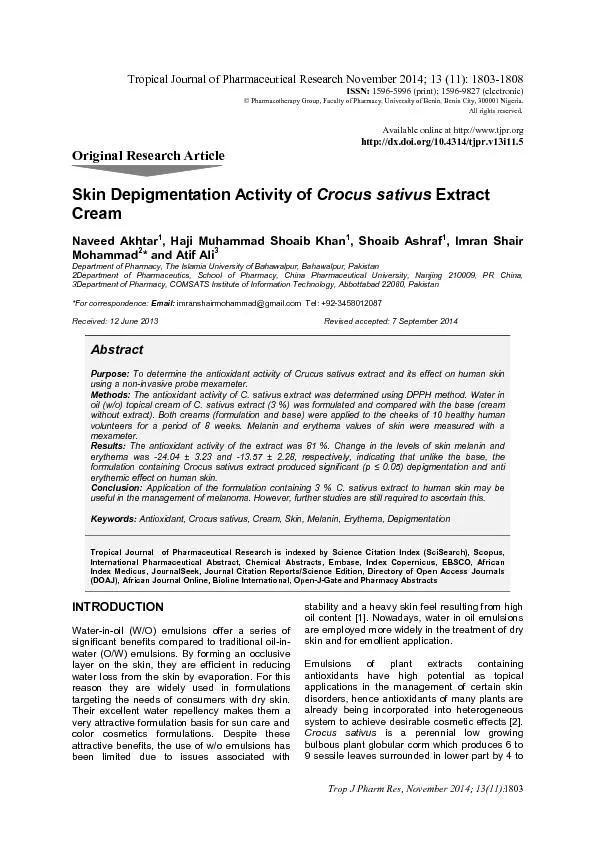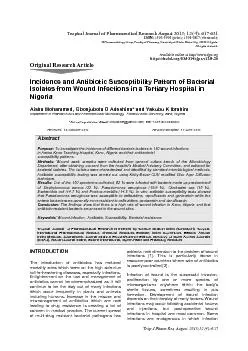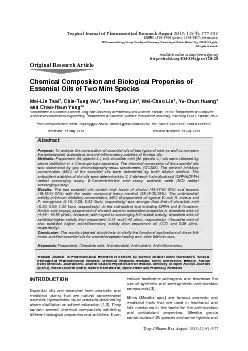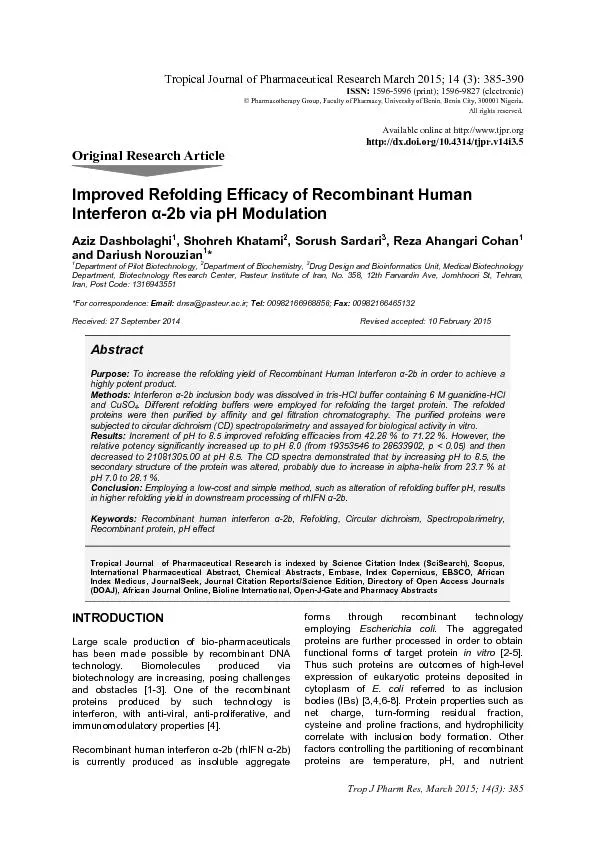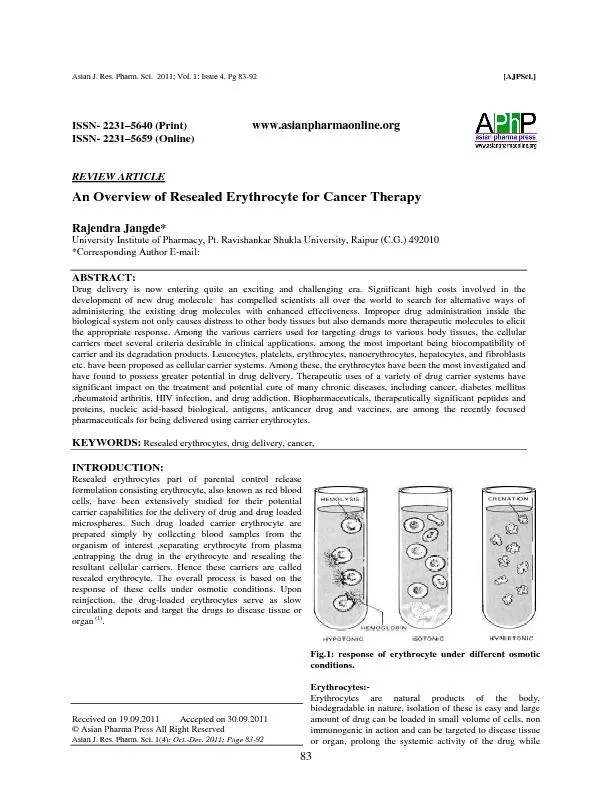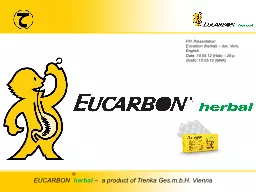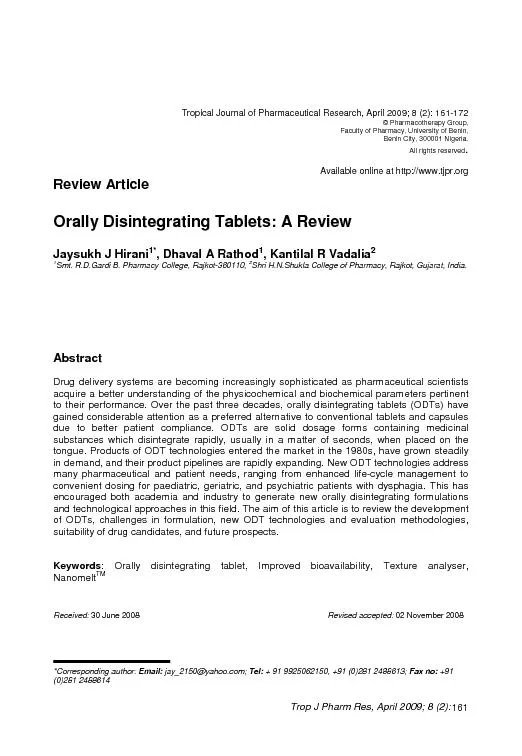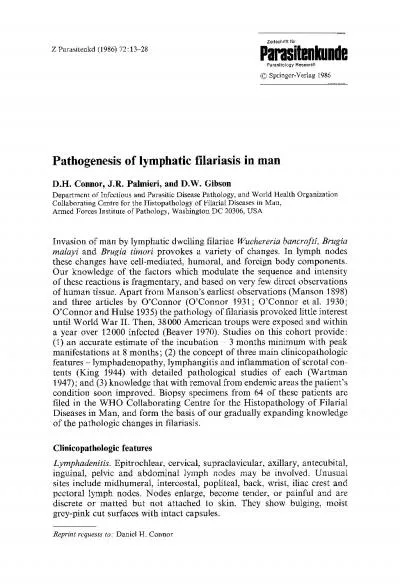PDF-Trop J Pharm Res,
Author : olivia-moreira | Published Date : 2016-05-07
Akhtar et al November 2014 13 11 1803 Tropical Journal of Pharmaceutic al Research November 201 4 1 3 11 1 803 1 808 ISSN 1596 5996 print 1596 9827 electronic
Presentation Embed Code
Download Presentation
Download Presentation The PPT/PDF document "Trop J Pharm Res," is the property of its rightful owner. Permission is granted to download and print the materials on this website for personal, non-commercial use only, and to display it on your personal computer provided you do not modify the materials and that you retain all copyright notices contained in the materials. By downloading content from our website, you accept the terms of this agreement.
Trop J Pharm Res,: Transcript
Download Rules Of Document
"Trop J Pharm Res,"The content belongs to its owner. You may download and print it for personal use, without modification, and keep all copyright notices. By downloading, you agree to these terms.
Related Documents

